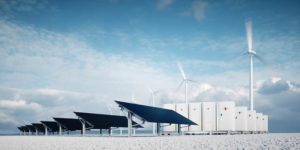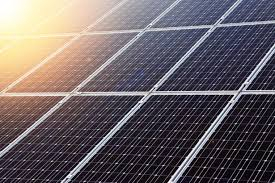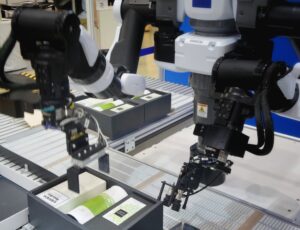
The window to reach the U.S’s net zero goals is getting increasingly narrower, even with the hefty investments and ambitious goals set by the Biden administration. Investments in renewable energy and carbon sequestration projects have exponentially increased in the last few years.The state of New York, for example, saw a 2,100% expansion in the solar sector in the last decade. With an ever increasing demand coupled with labor shortages within the solar sector, there is substantial need for automation within the solar sector.
However, no matter how much money is invested in renewable projects, time is still a limiting factor. Though much of the technology (especially in solar and offshore wind) has significantly improved, it still has a lot of catching up to do in order to reach imminent climate targets.
There have been several strategies within the renewables sector to speed up projects. One is the use of artificial intelligence in different parts of the energy sector, such as grid modernization.
Another is the use of robotics to automate manual tasks in the energy sector. For example, installing and cleaning solar panels is not only time consuming, but also dependent on a low supply of workers who have the knowledge and skills to do so. Another time consuming task is solar piling (setting up the support structure for solar panels). This is a huge bottleneck in the progress of solar projects.
Using robotics in solar and offshore wind

Several robotics companies have come up with ways to automate these tasks. Built Robotics (robotics company that specializes in construction machinery) , for example, has developed a fully autonomous solar piling system. Normally, a solar farm requires thousands of piles to be installed. Each solar pile weighs around 200 pounds and 12-16 feet in length. The process involves several time and labor-intensive activities such as surveying, pile distribution and installation. The autonomous system allows the solar piling to be completed five times faster than conventional piling.
Other companies such as Sarcos, has automated solutions for solar panel installations. The solution uses cameras to identify the positioning of panels and vacuum-based robotic arms to install the panels where needed. Their pilot project was funded by the Department of Energy.
It is not only solar projects that robotics can benefit, offshore wind offers great potential too. Recently, the UK opened its first national robotics centre for offshore wind. The Digital, Autonomous and Robotics Engineering (DARE) Centre in Blyth will focus on researching and developing robotics to speed up tasks in offshore wind.
 Boosting power generation from renewables requires cross-collaboration in the industry between experts, policy makers, and researchers is crucial. New York Energy Week brings together key people in the energy market in various sectors such as finance, government, law, media and academia. Find out some of the ways you can get involved here. NYEW is also hosting key market players in the U.S. energy industry for its decennial anniversary between June 20th to June 23rd 2023.
Boosting power generation from renewables requires cross-collaboration in the industry between experts, policy makers, and researchers is crucial. New York Energy Week brings together key people in the energy market in various sectors such as finance, government, law, media and academia. Find out some of the ways you can get involved here. NYEW is also hosting key market players in the U.S. energy industry for its decennial anniversary between June 20th to June 23rd 2023.

